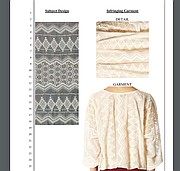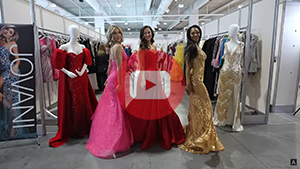LEGAL
Copyright Case Decision May Change Legal Game
Copyright-infringement lawsuits have been big business in Los Angeles, which is the center of many creative industries including fashion, film and music. But a recent case tackling this topic in Southern California is making waves and might force prospective plaintiffs to be more diligent when filing for copyright protection. The case might also make it easier for defendants to knock out poorly put-together cases if they can prove a plaintiff’s copyright registrations are invalid.
A recent appellate decision in the United States Court of Appeals for the Ninth Circuit was submitted in Pasadena, Calif. The decision, awarded June 4, provided $121,423.01 in attorneys fees and litigation expenses to the defendants in the case, Gold Value International Textile v. Sanctuary Clothing LLC.
Representing Sanctuary was Jessica Rutherford, a partner in Ferdinand IP, which has offices in several cities, including Los Angeles and New York.
“This is the first time an appellate court held a registration was invalid under the Pro IP Act [Prioritizing Resources and Organization for Intellectual Property Act of 2008] without a finding of intent to defraud the copyright office,” Rutherford said. “It makes it easier for defendants to prove registration invalid.”
“The court made clear that there is a severe downside to bringing cases without valid registration,” she explained. “Up until this point, a lot of defendants might have been wary of pursing meritorious defenses. Even if they won, they still have to spend a significant amount in legal fees.”
Gold Value, a Los Angeles textile company that does business as Fiesta Clothing, was represented by Doniger/Burroughs, which has offices in Los Angeles’ Venice neighborhood and Brooklyn, N.Y. Retailers doing business with Sanctuary Clothing, a Los Angeles–headquartered fashion brand, also were sued. Sanctuary’s codefendants included Amazon.com, Macy’s Inc. and Nordstrom Inc.
Making the case—again
While Doniger/Burroughs filed a petition to rehear the case, some legal watchers said that the outcome of the case will change some of the business of registering a copyright and what copyright-infringement cases are heard in court.
Pamela Koslyn of the Los Angeles–headquartered Law Office of Pamela Koslyn said that the decision will be influential in the way she handles infringement cases. “I see more reasons to make sure a plaintiff hasn’t been sloppy in asserting its claim and has the factual allegations as well as proof that it actually owns the copyrights it’s suing on and has complied with every aspect of the copyright act,” Koslyn said. “Since the garment industry operates with samples, it’s now more important to assert this defense—improper copyright registration as a result of calling a work ‘unpublished’ when in fact it’s been ‘published.’”
The bar for evidence has been raised, and it might change the way attorneys work with the law, said Doug Lipstone, an attorney for Weinberg Gonser LLP.
“This decision sends the message out to the public that if you seek protection with the copyright act, you have to be using it for the proper purposes,” he said. “You have to be using it as a shield, not as a sword.”
The Washington, D.C.–based Copyright Office has been critiqued for providing little examination or fact-checking of copyrights that are registered, Lipstone and some of his colleagues contend. Without stringent review of applications, defendants are put in the position of proving their innocence rather than being presumed innocent, Lipstone said. Some lawyers protest that certain material submitted for copyright is not creative enough to merit copyright protection or that applicants may not own the rights they claim.
Scott Burroughs of Doniger/Burroughs said that the recent decision will roll back valuable protections for plaintiffs. “Willful infringers should not be able to evade liability by pointing out a mistake in the copyright registration for the work at issue,” he wrote in an email.
Originally filed in 2016, Fiesta’s suit alleged that Sanctuary copied a fabric design that was sold at various retailers. Sanctuary’s lawyers saw mistakes in the copyright registration and demanded that the court deem the copyright registration invalid.
The issue started in 2013 when Gold Value filed to copyright a number of patterns. For the copyright registration to be valid, the patterns were not supposed to be published or made available to the public through distribution or sales before the copyright office registered them. But Gold Value had previously sold the pattern, which was being litigated. It was sold to make samples, but Ferdinand IP lawyers said that the pre-registration sale, or publishing, had made the copyright registration invalid.
Gold Value’s lawyers said that their clients did not know all of the law when they filed for copyright protection, it was an innocent mistake and the protection should not be thrown out. The court did not agree. It upheld a lower court’s previous decision and decided that the copyright continued to be invalid. Due to that determination, Gold Value did not have the legal right to file the copyright-infringement lawsuit.
The business of defending copyright
Copyright cases are a growth business, according to litigation analytics company Lex Machina. Overall copyright-case filings, excluding file-sharing cases, increased 38 percent from 2009 to 2018. Doniger/Burroughs is a big player in this field. In 2018, the firm filed 10.1 percent of copyright-infringement cases, or 310 out of 3,062 cases filed that year.
Copyright-infringement lawsuits are considered a cost of doing business for fashion brands, and Ilse Metchek, president of the trade group California Fashion Association, said it has had a deep impact on the business.
“People are very hesitant to put a print on a garment,” she said. “We try to avoid them as an industry unless a brand makes them in their office. It is an outgrowth of these suits.”
In May, CFA published a tip sheet for members on how to deal with copyright and the law. Titled “Protect Yourself,” it was written by Robert Ezra of Freeman Freeman & Smiley, LLP.Itincluded valuable advice regarding receiving anindemnity on patterns or a security from legal liability, applying for copyright-infringement insurance, using designs within public-domain designs, and simply creating proprietary prints.






















